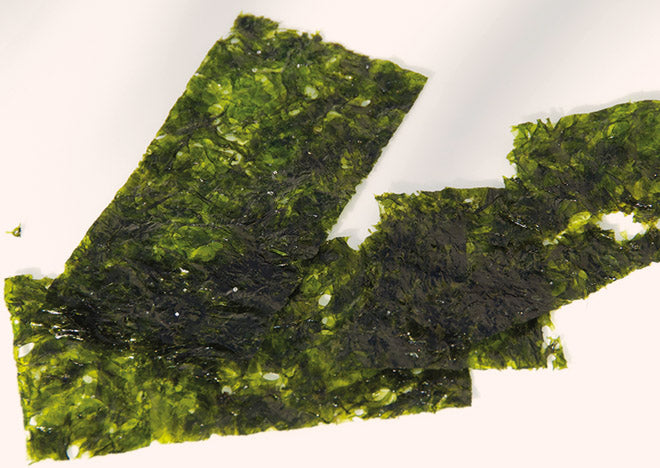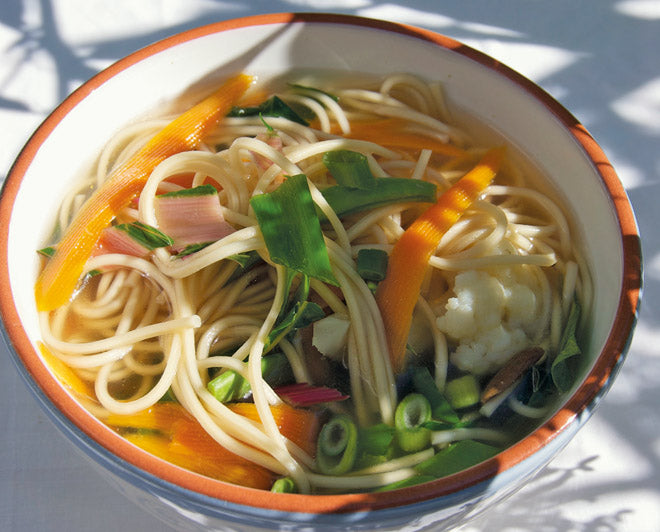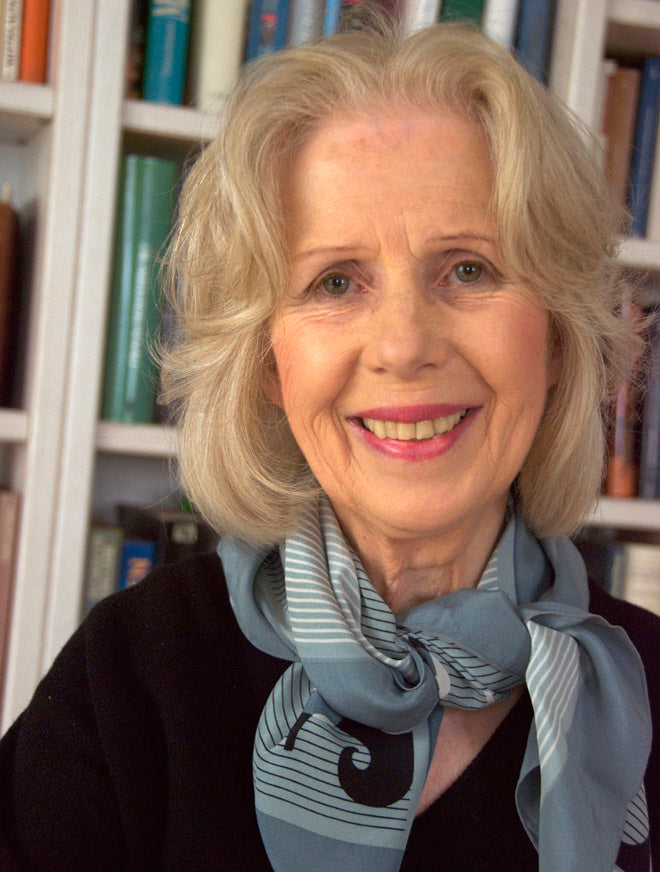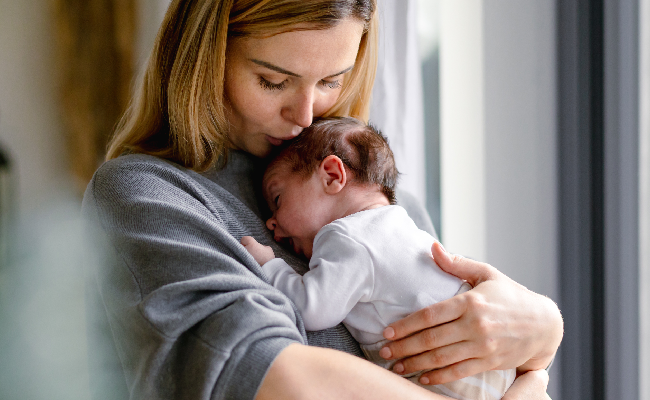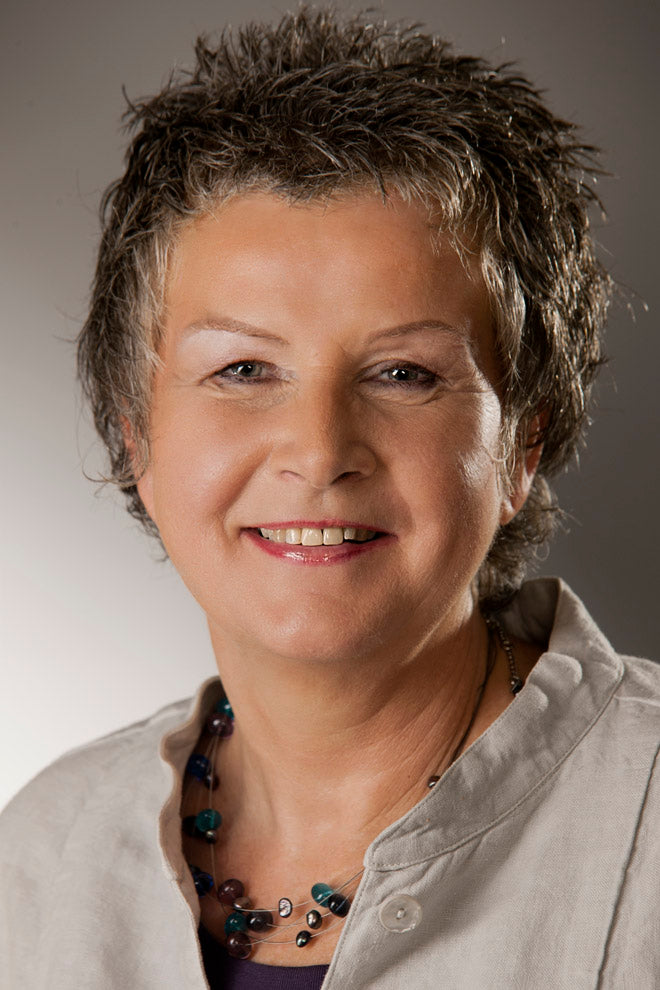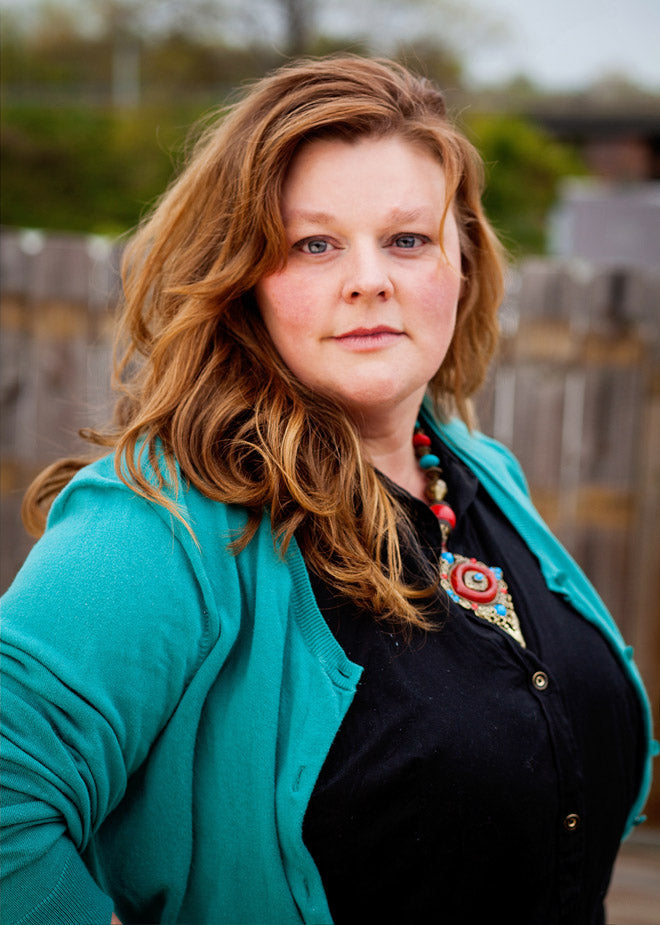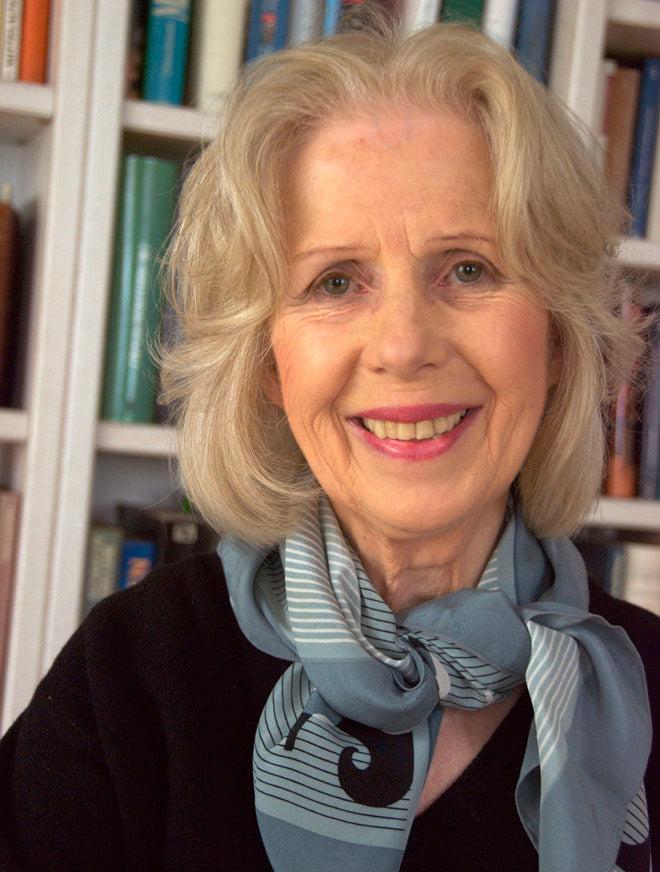
“I’d even give up my favorite food for wakame meatballs!”
“I’d even give up my favorite food for wakame meatballs!”
Interview with renowned cookbook author and nutrition expert Barbara Rias-Bucher
"Algae will also become increasingly important in our country, especially due to their richness in fiber and nutrients. As a source of iodine, high-quality protein and essential fatty acids, they play an important role, especially for a vegetarian or vegan lifestyle. When prepared correctly, sea vegetables taste simply delicious and serve not only as a plant-based alternative to fish and seafood, but also as a fine seasoning and medicinal remedy."
Nutrition expert Dr. Barbara Rias-Bucher, author of the compact guide “Sea Vegetables and Algae” , summarizes everything you need to know about healthy foods from the ocean – what characterizes the different types of algae, where you can get them and how you can prepare them in numerous tasty recipes according to Asian or European traditions.
Algae are among the oldest living organisms on the planet and make up about 95 percent of marine vegetation. Are these plants in the usual sense?
Barbara Rias-Bucher: That's a question of definition: some botanists count only land plants as part of the actual plant kingdom, the Planta e. According to a second view, green algae also belong to the same group, and this group of land plants and green algae is referred to as the green plant kingdom, the Chlorobionta . And the third, broad definition also speaks of the brown and red plant kingdoms, which means that brown and red algae are also counted as plants – they are the Heterokontobionta and the Rhodobionta . Bear in mind, too, that land plants probably evolved from green algae: as the ancestors of land plants, these colonized the edges of ponds and swamps. And because ponds and swamps also dry out again and again, the algal vegetation had to adapt if it wanted to avoid perishing. This is how plants came from the water to the land, as did animals later – as we know, all life comes from water.
In your book you differentiate between algae and sea vegetables. Why?
Rias-Bucher: Algae also include microscopically small organisms that, as phytoplankton, provide food for marine life, as microalgae (preparations) are considered nutritional supplements and superfoods, and are used as raw materials in industry - for example in medicine and cosmetics, in the food industry and in textile production. Sea vegetables, on the other hand, are macroalgae that are grown, harvested and prepared like vegetables. And that is what this compact guide is about, showing you how to incorporate these valuable plants into your normal menu.
For thousands of years, algae have been an important food source for the inhabitants of islands and coastal regions in Asia and Europe. Why will they continue to gain in importance in the future?
Rias-Bucher: The importance of algae and sea vegetables will certainly continue to increase. This is because "algae use sunlight more effectively and grow faster than land plants," says Sebastian Weickert from the University of Hohenheim. These plants can therefore make an important contribution to the supply of nutrients with new foods, especially protein and fatty acids: protein from algae is of higher quality than most animal proteins. There are now research projects that use computer simulations to test on a global level to see how much greenhouse gas emissions can be reduced by replacing animal protein with algae protein. Sea vegetables and algae also help with purification and detoxing: by stimulating the metabolism, the organism is better supplied with oxygen and the lymphatic system is activated so that waste products can be excreted more easily. Another factor is the high iodine content, which is important for two reasons: firstly, Germany is an iodine-deficient area. Secondly, people who do not eat sea fish can easily meet their iodine requirements with algae and sea vegetables - those who are vegetarian or vegan rely on iodine from plant-based foods, and sea plants are undoubtedly the most important source of iodine. Iodine is a trace element which, as a component of thyroid hormones, is one of the essential micronutrients. These hormones, which can only be produced with iodine, are involved in controlling growth, bone formation, brain development and metabolism, and influence general well-being, psyche and - via the release of insulin - body weight. The correct dosage of iodine is therefore extremely important for our health, because an overdose is just as harmful as iodine deficiency. Iodine is now also considered to protect against breast cancer and mastopathy, a benign change in breast tissue, and the importance of iodine during pregnancy and breastfeeding is emphasized. Detailed information about this can be found in an article on www.netzwerk-frauengesundheit.com, the website of Prof. Dr. Ingrid Gerhard (my co-author of "Eating Right During Pregnancy and Breastfeeding", also published by Mankau Verlag). But as with any substance, too much iodine is problematic, and I also go into this in detail in my compact guide to sea vegetables.
In the macrobiotic diet, algae and sea vegetables have already been discovered as a complete food and a plant-based alternative to fish and meat. What is special about this concept and what makes the power plants from the ocean so valuable?
Rias-Bucher: Many people think that macrobiotics is a nutritional concept from Asia, similar to Ayurveda. But the first macrobiotic was the German doctor Christoph Wilhelm Hufeland (1762-1836). He postulated that people could live to a ripe old age if they lived a healthy lifestyle with a sensible diet and plenty of exercise in the fresh air. Life expectancy has actually increased steadily since the Second World War - mainly thanks to hygiene, antibiotics, food safety and good nutrition. But diet-related diseases are also on the rise - obesity, diabetes and cardiovascular diseases. And Hufeland warned against only consuming refined food because this "leads to a constant overfilling of all blood vessels, and this always disturbs the balance and therefore health and life." Sea vegetables can teach us mindfulness when eating, because we can recognize the value of a food from the plants from the sea - not only because good quality has its price, but because the selection and preparation of algae requires a high degree of care. When prepared correctly, sea vegetables taste simply delicious and serve us not only as a vegetarian alternative to fish and seafood, but also as a seasoning and remedy, for example for skin and intestinal diseases, allergic reactions, rheumatism and arthritis. This is due to the high content of antioxidants, which strengthen our immune system, and omega-3 fatty acids, which our body cannot produce itself.
Where do the algae that you can now buy in health food stores and organic supermarkets actually come from? Is it also possible to harvest algae yourself – for example, on holiday by the sea?
Rias-Bucher: It is worth paying attention to quality when buying sea vegetables, because the micronutrient content depends on the water quality, regardless of whether the plants grow wild or come from aquaculture. You can get high-quality products made from microalgae for nutritional supplements and care at www.marine-therapy.com, for example. Asian, especially Japanese, grocery stores and supermarkets offer the largest selection of dried sea vegetables; they also sell pickled sea vegetables as salads and sometimes even fresh produce. The macrobiotic shelves in organic supermarkets are also very well stocked with dried seaweed. Fresh sea vegetables from European cultivation can be obtained online and from fishmongers, although they are usually only available to order. Just like land vegetables, fresh seaweed has its harvest season: for example, dulse and sea spaghetti from May to October, sea lettuce from March to July. Fresh sea vegetables that have been salted for preservation are also available outside of these harvest times. If you live on the coast, you have probably already harvested sea vegetables yourself. And if you're on holiday by the sea, you should give it a try, but with the right equipment and preparation: Use a tide table from the Internet or the tourist shop in your holiday resort to find out about the tides so that you don't run the risk of being surprised by the tide when collecting. If you don't know the different types of algae yet, you'll need an identification book, just like when collecting wild herbs.
Although sea vegetables and algae contain high amounts of protein, essential fatty acids, minerals and vitamins, we Central Europeans are not used to this type of seafood. What health risks are there and what should we pay particular attention to?
Rias-Bucher: Algae and sea vegetables are not superfoods that you can eat every day. The now widespread assumption of "the more, the better" applies to hardly any food, and certainly not to plants from the sea. Unlike people in East Asia, we have not been used to a diet rich in algae for thousands of years. We now know that the microbiota in our intestines is not (yet) adapted to algae in such a way that we can digest them completely - for example, we use a significant portion of the algae carbohydrates not as energy sources, but as fiber that strengthens our immune system and stimulates digestion. That is the positive aspect. The high iodine content (see above) is problematic, as it can exceed the recommended maximum intake of 500 micrograms of iodine per day, even by several times. Especially in older people, “even just one consumption of iodine-rich algae can lead to iodine-induced hyperthyroidism and thus to a potentially life-threatening disruption of the metabolism,” emphasizes the Federal Institute for Risk Assessment (BfR). That is why you will also find information on iodine content in the algae portraits in my book. Another problem is arsenic, especially in hijiki algae; some food safety authorities therefore even warn against eating hijiki, and in my book I therefore only mention traditional methods of preparation, but also refrain from using my own recipes. Finally, on the subject of pollutants: sea vegetables and algae bind pollutants such as heavy metals and other environmental toxins. Nevertheless, there is no need to worry about pollution. Most algae come from Japan and have been growing in tanks there for decades. According to the manufacturers, European sea vegetables from France have so far neither excessive iodine levels nor high levels of pollutants. In addition, regular tests of the water quality and the analysis of each harvest ensure that the quality is right. According to the Federal Institute for Risk Assessment, algae and sea vegetables from Japan did not show increased radiation levels even after the Fukushima reactor accident in 2011.
In your compact guide you present recipes from Asia and Europe. How do the two culinary traditions differ in terms of the use of seaweed and sea vegetables?
Rias-Bucher: Asian recipes are more sophisticated, European ones are more down-to-earth. In Asia, sea vegetables have always been considered a delicacy that was part of both court cuisine and the sophisticated cooking of monasteries. Vegetarian Shojin cuisine, developed by Zen monks, is an expression of the pursuit of harmony. No animals are killed for it; the cook works with the utmost concentration in harmony with nature, which provides him with all the treasures of the plant kingdom that grow in water and earth. The basis for soups and sauces in the monastery kitchen is homemade stock made from kombu, and for the sake of purity, this so-called dashi is only lightly seasoned. A cookbook from the Edo period (1603 to 1868) contains recipes for 21 different types of seaweed - a sign that sea vegetables were just as valued in middle-class cuisine as garden vegetables. In Europe, however, sea vegetables were mainly substitute food: fish and seafood were profitable, and fishermen preferred to sell them at the market, while they themselves simply ate the plants from the sea. Sea vegetables did not require any (high) seaworthy boats, but could simply collect what the tide had washed up. Dried dulse was a nutritious snack for Irish fishermen and Scottish Highlanders. According to archaeologists, dulse was part of the everyday diet of coastal inhabitants of the British Isles even before the turn of the millennium. In the recipes in this book, I present traditional dishes from Asia and Europe, as well as my own creations that I like to eat. As always, my favorite is couscous salad, this time with nori. When I made spaghetti with haricot de mer, I was surprised at how well pasta and seaweed harmonize. And I even forgo my favorite dish, fish and chips, for wakame meatballs.
Book tip:
Dr. Barbara Rias-Bucher: Sea vegetables and algae. Compact guide. Healthy foods from the ocean. Mankau Verlag, 1st edition July 2017, paperback, 11.5 x 16.5 cm, full color, 127 pages, 8.99 euros (D) │ 9.20 euros (A), ISBN 978-3-86374-386-4.
Link recommendations:
More information about the book "Sea Vegetables and Algae"
To the reading sample in PDF format
More about the author Dr. Barbara Rias-Bucher
To the Internet forum with Dr. Barbara Rias Bucher
